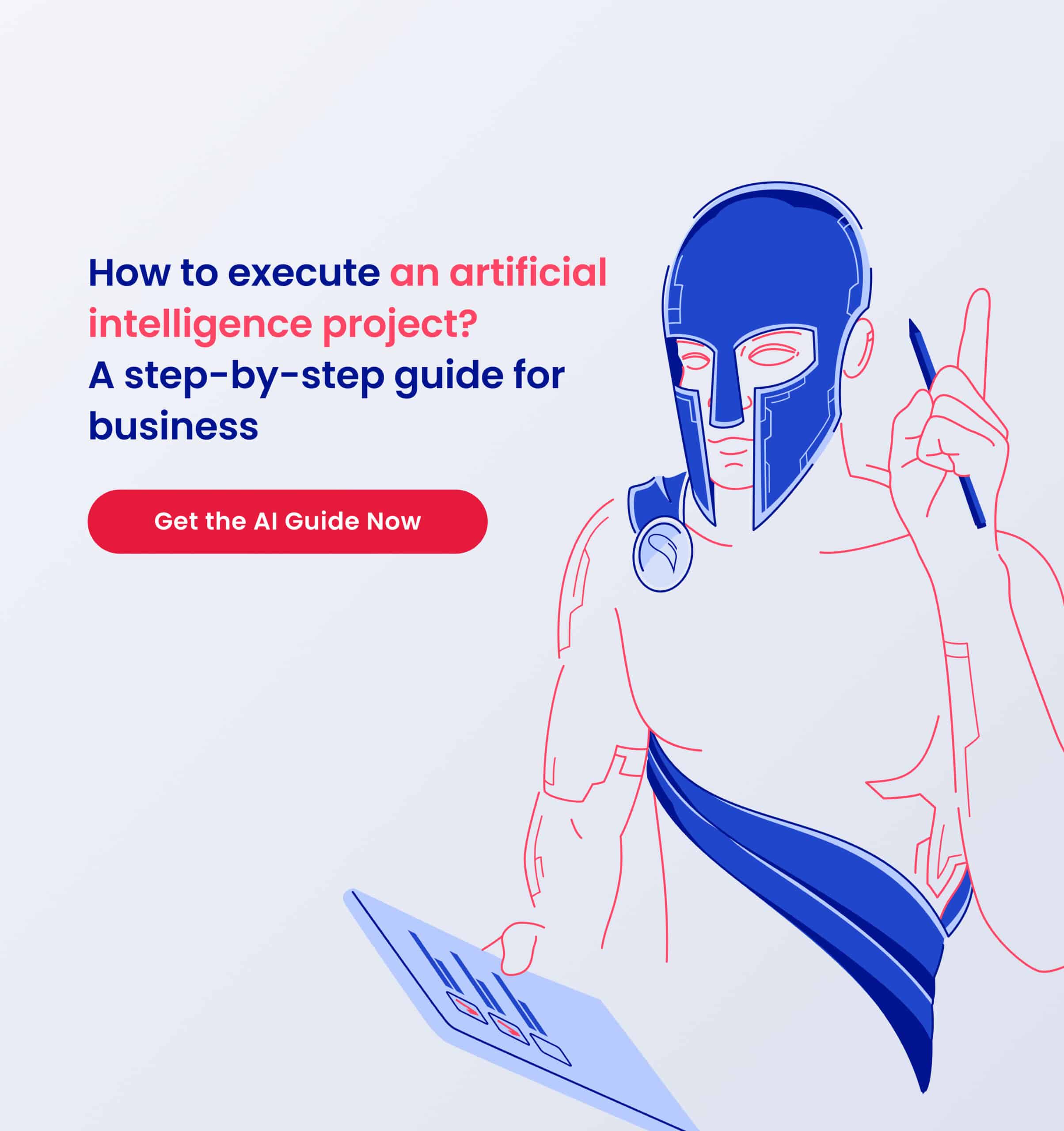
Banks – and most financial institutions – have vast amounts of data sets and are poised to take advantage of big data. However, there is a common question we get from the banks we’ve worked with: Where do we start with artificial intelligence?
It’s a fair question. For example, a prevailing area of the business in which banks have large amounts of data is clients, whether business customers or consumers. So taking advantage of that data becomes a no-brainer. Yet this leads to further questions. Like, should the bank start with optimizing revenue growth? Is there a better way to manage risk? Or use machine learning to come up with better financial products?
Frankly, the answer to these questions is that a bank should deploy AI in all areas of the business in which machine learning could positively impact the business. But that’s not a feasible approach. Thus, let’s go over the methodology MindTitan uses when approaching artificial intelligence in banking and finance, which are understanding the business objectives, auditing existing and future processes from two perspectives, and creating an AI roadmap to truly gain competitive advantages across the business.
Start with business objectives
As a bank’s executive management team makes strategic decisions, these decisions roll down to business unit leaders and become time-restricted objectives and goals.
To illustrate, a strategic decision could be to expand market share in a particular region this year, which become objectives for cross-functional business units. Sales and marketing have an objective to increase demand and convert that demand into revenue. Customer service must retain customers, as not to lose revenue, and field inbound inquiries to sales. Risk management comes into play as well. And the bank needs to understand if the financial products they offer meet the market needs, or if core products must be updated, or new products and services should be created.
Clearly, each business unit has its own interests, but the objectives are clear and aligned to increasing market share, responsibly. This leads to the next logical question: How do we accomplish our objectives and how do we measure success?
Audit existing & future processes
Sure, it’s exciting to think about jumping into the data and getting started with an artificial intelligence plan, but there’s a crucial step banks must take before even getting to the data: Auditing existing and future processes.
Why? Well, no amount of artificial intelligence and machine learning models will fix broken business processes. Granted, working with an AI expert, processes will be re-thought, making them scalable, more efficient, and more effective.
During this audit, it is utterly important that the processes are looked at from two perspectives. First, the processes must be looked at by someone that understands the process, typically someone from the business (also known as a “problem owner.”) Second, someone with artificial intelligence expertise must look at the process, as this person provides a fresh, data-led perspective of the process. This person is typically a data scientist, who understands if there is even a use case with business impact, or if the data to achieve the objective exists throughout interconnected processes within and between business units.
Also, the AI expert can help understand the most optimal starting point. For instance, one area banks can start with machine learning is finding ways to reduce friction in the customer journey to increase revenue, as to not lose opportunities to competitors. Banks have a plethora of customer behavior data, as well as detailed information about customer personas and financial product information. Having a human analyze this data and make decisions is possible, but takes a very long time – the customer has already moved on. Using deep neural networks, an AI model can understand the several paths a customer could take to make a financial decision, and which path is most probable based on customer personas, micro-segmentation, and behavior. The AI model will automate processes to “nudge” the customer in the right direction, like pushing educational information to the customer.
Create an AI roadmap
One AI model can accomplish quite a bit for a particular business unit within a bank, but several machine learning models, working together can do wonders, which is why a roadmap for an artificial intelligence initiative is important.
Simply put, the output of one artificial intelligence model can become an input for another model, making them more powerful together – think 1+1 = 3.
For example, the AI sales flow assistant model described in the previous section becomes a lot more powerful when coupled with AI-powered propensity modeling. Propensity modeling helps the AI model that assists the product managers in understanding the fit between the services the bank offers and the market.
And so on.
Granted, budgets and ROI are important, which is why picking an appropriate starting point is necessary, as mentioned above. Think big, but start small by working with the AI expert to deploy a model with a good return on investment, but doesn’t take much too long to get results, doesn’t have an astronomical price tag, or has an unnecessary strain on company resources overall.
Lastly, the roadmap creates a clear plan for the next machine learning models to deploy and work on, while the other ones are learning and improving.
So, start with what you know – company objectives and current & future processes. Then enlist an artificial intelligence expert to help with the bank’s AI & machine learning journey.
Want to learn more about our products?
Harry Liimal
HEAD OF BUSINESS DEVELOPMENT
Harry has years of experience working in business development, strategy, and digitalization for some of the world’s largest companies. He is a people person, who enjoys fast-paced environments and multiple responsibilities. He is especially curious about transformation and disruptive technology.
Harry holds a Master’s degree in Law from the Tartu University and is acquiring an MBA at the Estonian Business School. He has also studied innovation management in Japan at the Nagoya University of Commerce and Business.








